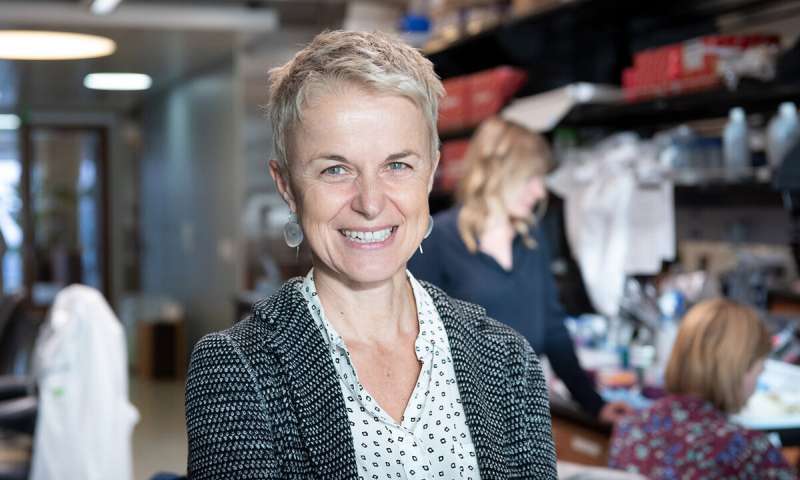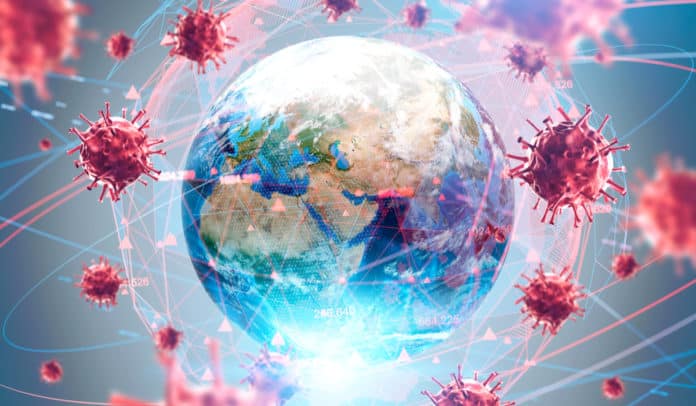Crucial Molecules Targeted by Coronavirus Discovered by Researchers
The SARS-CoV-2 virus that causes COVID-19 infection and other coronaviruses hijack the infected person’s cells and assimilate the cellular machinery helping it survive and proliferate. A collaborative team of researchers has recognized the vital molecular procedures of the cell that are utilized by the coronavirus from Chan Zuckerberg Biohub, Gladstones Institutes, Synthego corporation, and UCSF (San Fransisco), who have published their findings in the journal Cell on December 8th, 2020, in their paper titled “Genetic screens identify host factors for SARS-CoV-2 and common cold coronaviruses”.
Gladstone Institute of Virology’s director Melanie Ott (MD, Ph.D.) is one of the study leaders who emphasize the current and future importance of their study. The research on the molecules targetted by coronavirus was performed on different coronaviruses, giving a much broader perspective and the possibility of a broad-spectrum drug.

Coronaviruses comprise a large family of viruses that mainly cause the common cold and severe forms of infection. Chan Zuckerberg Biohub’s principal investigator Andreas Puschnik (Ph.D.), is also a study leader. He noted that the coronaviruses have great pandemic potential, having caused multiple ones in the past. The SARS epidemic of 2002 was caused by the SARS-CoV virus and Middle East outbreaks by the MERS virus.
Coronaviruses compared
Since the coronavirus uses host cell machinery to advance, the scientists focused on the molecules targeted by the coronavirus instead of the viral components.
The scientists injected the two common cold-causing coronaviruses and the SARS-CoV-2 into human cells, thus killing the cells. They then used the CRISPR-Cas9 gene-editing approach to cause mutations in the human cells and observed mutated cells that survived the infection.
Puschnik explained how these mutations were most likely in the exact molecules targeted by the virus. Results involved the human ACE2 receptor that prevented SARS-CoV-2 infection upon mutation. This was expected since the receptor was known to be targetted by the COVID-19 virus.
Two types of lipids in the human cells, cholesterol and PIP (phosphatidylinositol phosphate), are balanced by the action of certain genes mutated in the study to prevent infection.
Cholesterol is necessary for many viruses and was studied for the first time with regards to coronavirus, while PIP also hadn’t been associated with SARS-CoV-2 earlier. PIP is involved in transport vesicles for viral entry and exit through cells.
Therapeutic importance of these molecules targeted by coronavirus
Mutated cells lacking these lipids were engineered by the scientists who found that any of the 3 coronaviruses didn’t kill such cells experimented on. The disrupted balance of these lipids also caused less vulnerability in the cells. This concept of engineering the lipid-generating genes in human cells can prove a potent solution to coronavirus infections.
A professor at UCSF’s Department of Medicine, Ott, spoke about the significance of targeting the host cell machinery rather than an individual virus. This strategy provides a broad-range solution that readies us for possible pandemics in the future.
The results of testing the molecules targeted by coronavirus between the 3 viruses weren’t unanimous. For instance, some molecules were only required by the COVID-19 causing virus but not by the other two.
Future work would focus on finding the SARS-CoV-2 aspects that make it deadly, the effectiveness of the lipid-targeting drugs, their adverse effects, and the universality of their findings in the coronavirus family include testing on MERS and SARS viruses as well.
Both Ott and Puschnik acknowledged the researchers of different labs that dived into the project together. While viral host factors were the niche subject of Puschnik, the Biosafety level-3 lab was provided by collaborating with Gladstone Institutes. Nevan Krogan (Ph.D.), a senior investigator at Gladstone, directed the CRISPR-Cas9 screening analysis, while the Synthego scientists did the crucial cell engineering to mutate the molecules targeted by a coronavirus.
Thus, the research was made possible by the joint effort and contribution of these dedicated and knowledgeable scientists
Author Name: Deepthi Prakash



